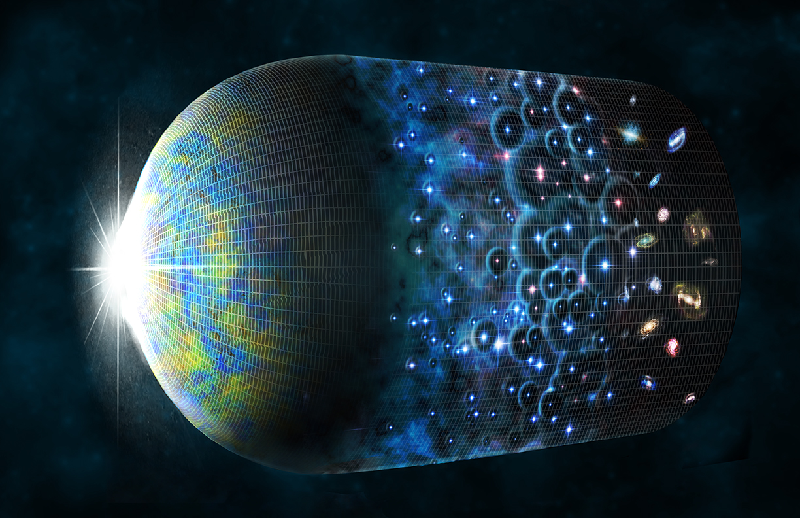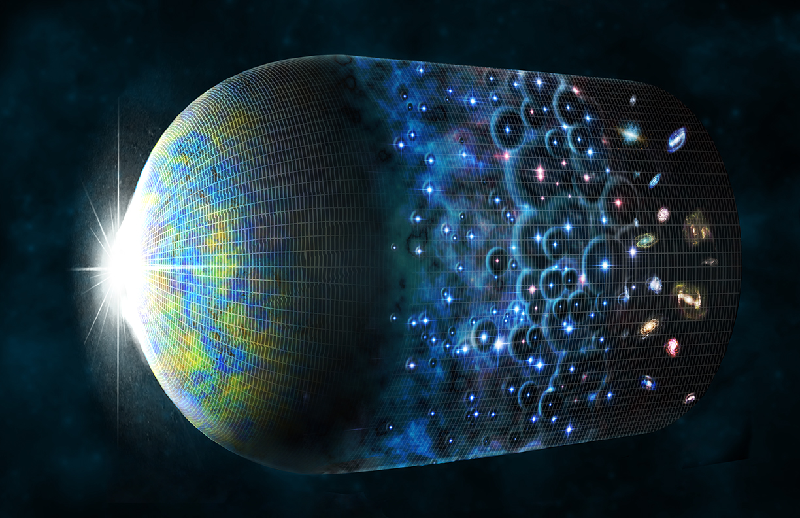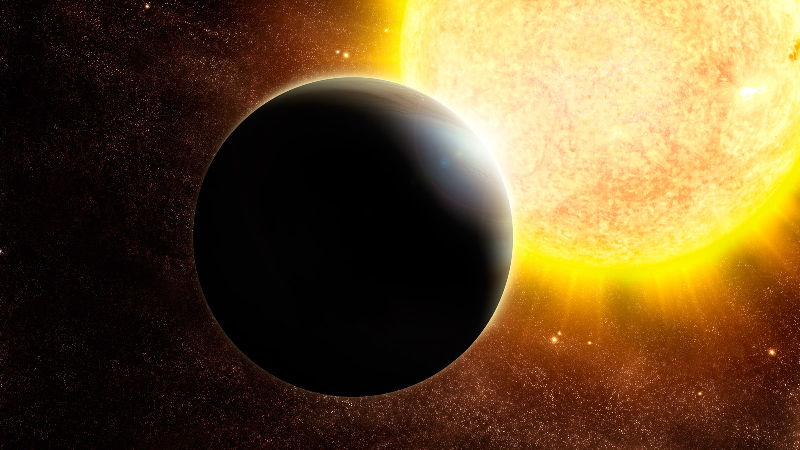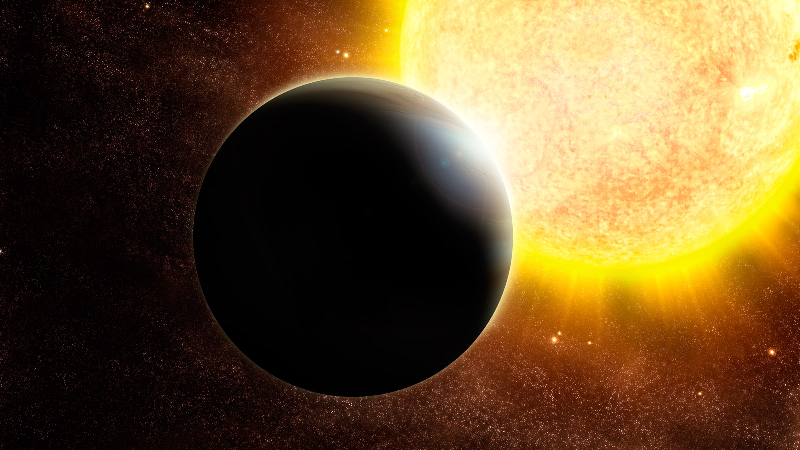Nobel Prize—Tackling Cosmic Questions
Where do we come from? Are we alone? The 2019 Nobel Prize in Physics honors researchers who have helped us find some answers to these cosmic questions. James Peebles of Princeton University received half of the prize for describing details of the evolution of our Universe from its hot dense past to its galaxy-filled present. Michel Mayor and Didier Queloz of the University of Geneva received the other half of the prize for their discovery of a planet orbiting a star like our Sun.
When Peebles began working on cosmology in the early 1960s, the field was fairly abstract, dominated by discussions over the mathematical consistency of an infinitely dense point at the very beginning of the Universe. In 1965 Peebles and his colleagues argued that—regardless of the initial state of the cosmos—matter and radiation should have been in thermal equilibrium in the early Universe, when the temperature was above 1010 K [1]. Running the cosmic clock forward, they calculated that the temperature of that radiation would cool to a present value of around 10 K, depending on the overall density of the Universe.
As luck would have it, a detection of background radiation in the microwave region of the spectrum was made in that same year by Arno Penzias and Robert Wilson at Bell Labs in New Jersey [2]. Penzias and Wilson approached Peebles and his Princeton colleagues to make sense of their signal, which corresponded to a radiation temperature of about 3.5 K. This first measurement of the cosmic microwave background (CMB) was a breakthrough moment for physical cosmology, the field that uses the laws of physics and astronomical observations to construct models of the Universe’s evolution. “One could almost say that Peebles invented modern physical cosmology,” says astrobiologist Charles Lineweaver from the Australian National University in Canberra.
Peebles used the early observations of the CMB to make new predictions for “cooking up” nuclei in the hot dense soup generated by the big bang. Earlier studies had already considered this so-called big bang nucleosynthesis (BBN), but they hadn’t fully accounted for the effect of background radiation (see 5 May 2005 Focus story). The presence of this radiation in the early Universe limited the formation of heavy elements, as high-energy photons can dissociate nuclei into protons and neutrons. Peebles realized that knowledge of the CMB temperature allowed him to predict when this photodissociation would end, so that protons and neutrons could begin to fuse together. Based on this timing of nuclear fusion, he determined that the amount of helium created in the big bang should account for between 27% and 30% of all nuclear matter [3]. Impressively, this estimate is not far from the current estimate of the primordial helium abundance of 25%. BBN expert Keith Olive from the University of Minnesota says Peebles’ work was “fundamental” in reviving efforts to explain the origin of light elements.
Peebles had an impact in many other subfields of cosmology. He was one of the theorists who predicted temperature fluctuations in the CMB, which were eventually observed by all-sky surveys such as those of the Planck and WMAP satellites. He had a hand in solidifying the evidence for dark matter by showing that spiral galaxies like our Milky Way could not have their flattened shape without the extra gravitational pull from dark matter [4]. He also was an early proponent for adding so-called dark energy to cosmological models to help explain the observed large-scale structure of the Universe.
“Just about every advance in our understanding of cosmology has been boosted by the work of Jim Peebles,” says Princeton cosmologist Jeremiah Ostriker. “Big bang nucleosynthesis, the growth of cosmic structure, the existence of dark matter, and so many other advances in our understanding were shepherded by Jim Peebles’ work and wisdom.” Thanks to his efforts, cosmologists can explain the evolution of the Universe with just a handful of numbers, says experimental astrophysicist Lyman Page, also from Princeton.
The other half of this year’s physics prize focuses on the planetary scale. The ground-breaking discovery by Mayor and Queloz of a planet orbiting a Sun-like star came two decades before the Kepler and TESS satellites made planet detection routine. In the early 1990s, astronomers were still struggling to find hints of planets beyond our solar system. There were some detections of planets orbiting neutron stars called pulsars, but those environments were considered so unique that they gave little insight into the development of Earth-like planets.
The search strategy of Mayor and Queloz was based on the radial velocity technique, which involves monitoring the spectral lines in a star’s emission. If a planet is orbiting the star, those lines will shift slightly up and down in frequency as the star is tugged back and forth by the planet’s gravity. Previous radial velocity surveys had come up empty, but they had been limited to the brightest stars in the sky. Mayor, Queloz, and their colleagues designed a more sensitive spectrograph, called ELODIE, that allowed them to target a larger number of stars. In 1995, they reported a planet-induced wobble in 51 Pegasi, a Sun-like star located 50 light-years away [5].
The detected planet, named 51 Peg b, was not something that most astronomers would have predicted. The large amplitude of the radial velocity signal implied that the planet was massive, roughly half the size of Jupiter. But the period of the signal was just 4 days, so the planet’s distance to its star was only 5% of the Earth-Sun separation. Calculations suggested that the planet’s surface temperature would be 1300 K.
“Mayor and Queloz helped launch the exoplanet detection industry,” Lineweaver says. He explains that their discovery had an initially negative effect on searches for worlds like our own, as 51 Peg b—and other “hot Jupiters” that were subsequently discovered—gave the impression that Earth-like planets might be very rare. But once astrophysicists accounted for the high likelihood of detecting hot Jupiters, they realized that “our type of planetary system could be the most common kind,” Lineweaver says.
And if Earth-like worlds are ubiquitous, we might not be the only ones watching the cosmic evolution unfold.
– Michael Schirber
Michael Schirber is a Corresponding Editor for Physics based in Lyon, France.
References
- R. H. Dicke, P. J. E. Peebles, P. G. Roll, and D. T. Wilkinson, “Cosmic black-body radiation,” Astrophys. J. 142, 414 (1965).
- A. A. Penzias and R. W. Wilson, “A measurement of excess antenna temperature at 4080 Mc/s,” Astrophys. J. 142, 419 (1965).
- P. J. E. Peebles, “Primeval helium abundance and the primeval fireball,” Phys. Rev. Lett. 16, 410 (1966).
- J. P. Ostriker and P. J. E. Peebles, “A numerical study of the stability of flattened galaxies: or, can cold galaxies survive?,” Astrophys. J. 186, 467 (1973).
- M. Mayor and D. Queloz, “A Jupiter-mass companion to a solar-type star,” Nature 378, 355 (1995).







